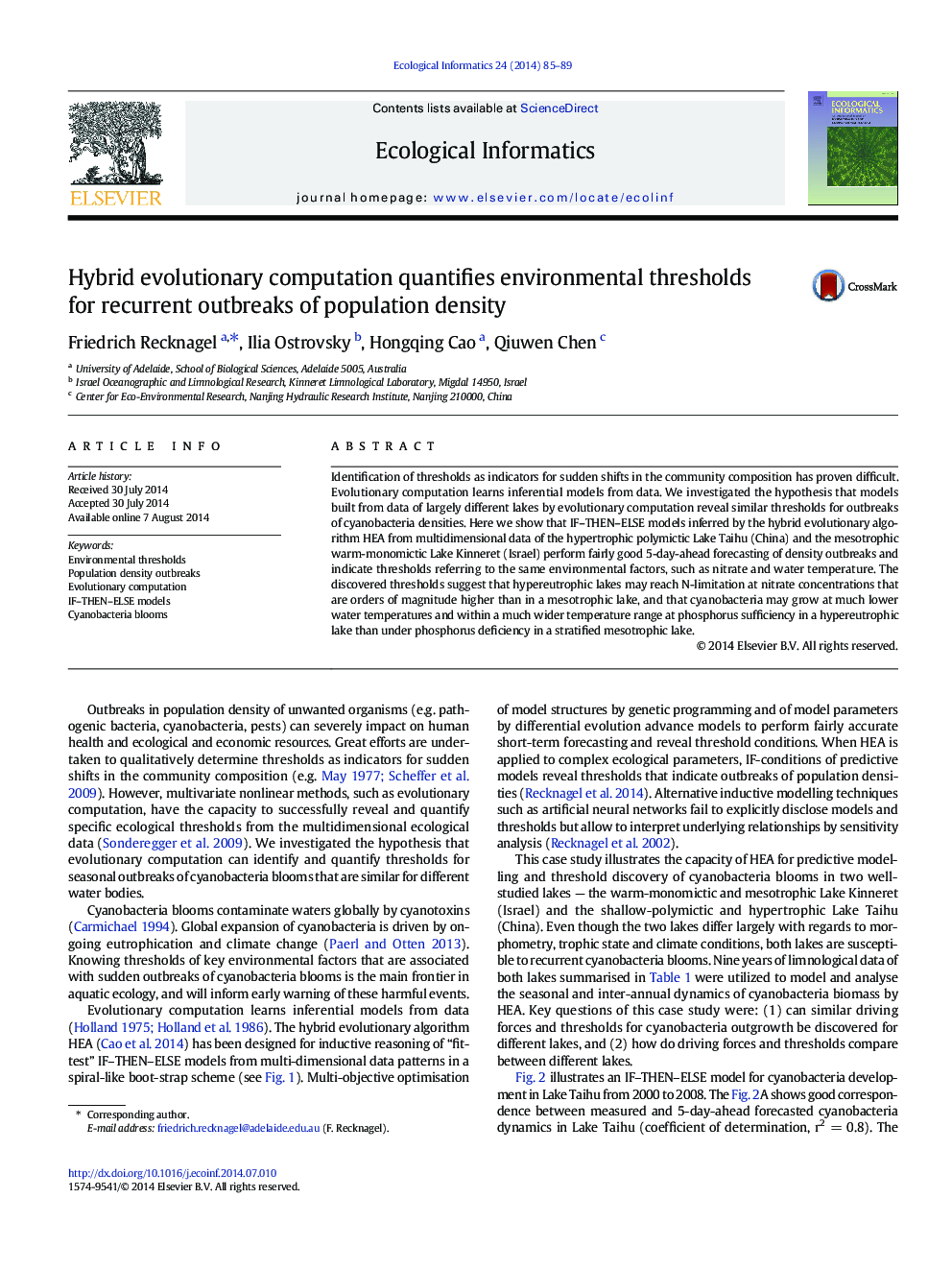| Article ID | Journal | Published Year | Pages | File Type |
|---|---|---|---|---|
| 6295894 | Ecological Informatics | 2014 | 5 Pages |
Abstract
Identification of thresholds as indicators for sudden shifts in the community composition has proven difficult. Evolutionary computation learns inferential models from data. We investigated the hypothesis that models built from data of largely different lakes by evolutionary computation reveal similar thresholds for outbreaks of cyanobacteria densities. Here we show that IF-THEN-ELSE models inferred by the hybrid evolutionary algorithm HEA from multidimensional data of the hypertrophic polymictic Lake Taihu (China) and the mesotrophic warm-monomictic Lake Kinneret (Israel) perform fairly good 5-day-ahead forecasting of density outbreaks and indicate thresholds referring to the same environmental factors, such as nitrate and water temperature. The discovered thresholds suggest that hypereutrophic lakes may reach N-limitation at nitrate concentrations that are orders of magnitude higher than in a mesotrophic lake, and that cyanobacteria may grow at much lower water temperatures and within a much wider temperature range at phosphorus sufficiency in a hypereutrophic lake than under phosphorus deficiency in a stratified mesotrophic lake.
Related Topics
Life Sciences
Agricultural and Biological Sciences
Ecology, Evolution, Behavior and Systematics
Authors
Friedrich Recknagel, Ilia Ostrovsky, Hongqing Cao, Qiuwen Chen,
